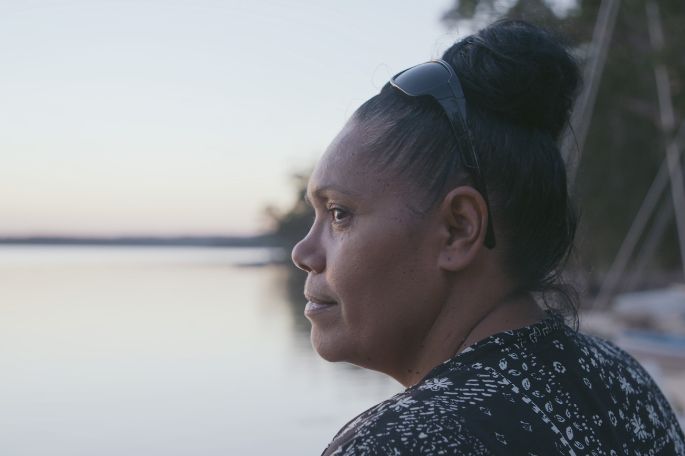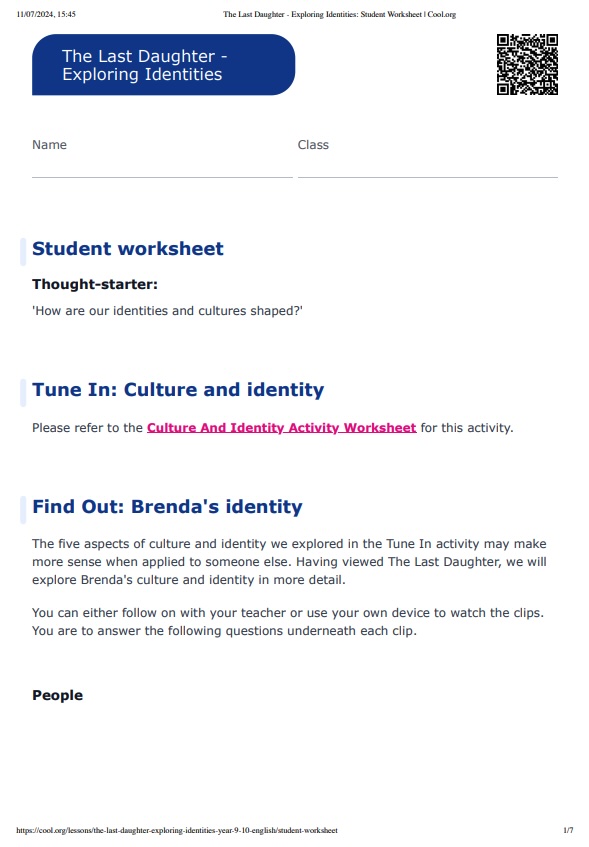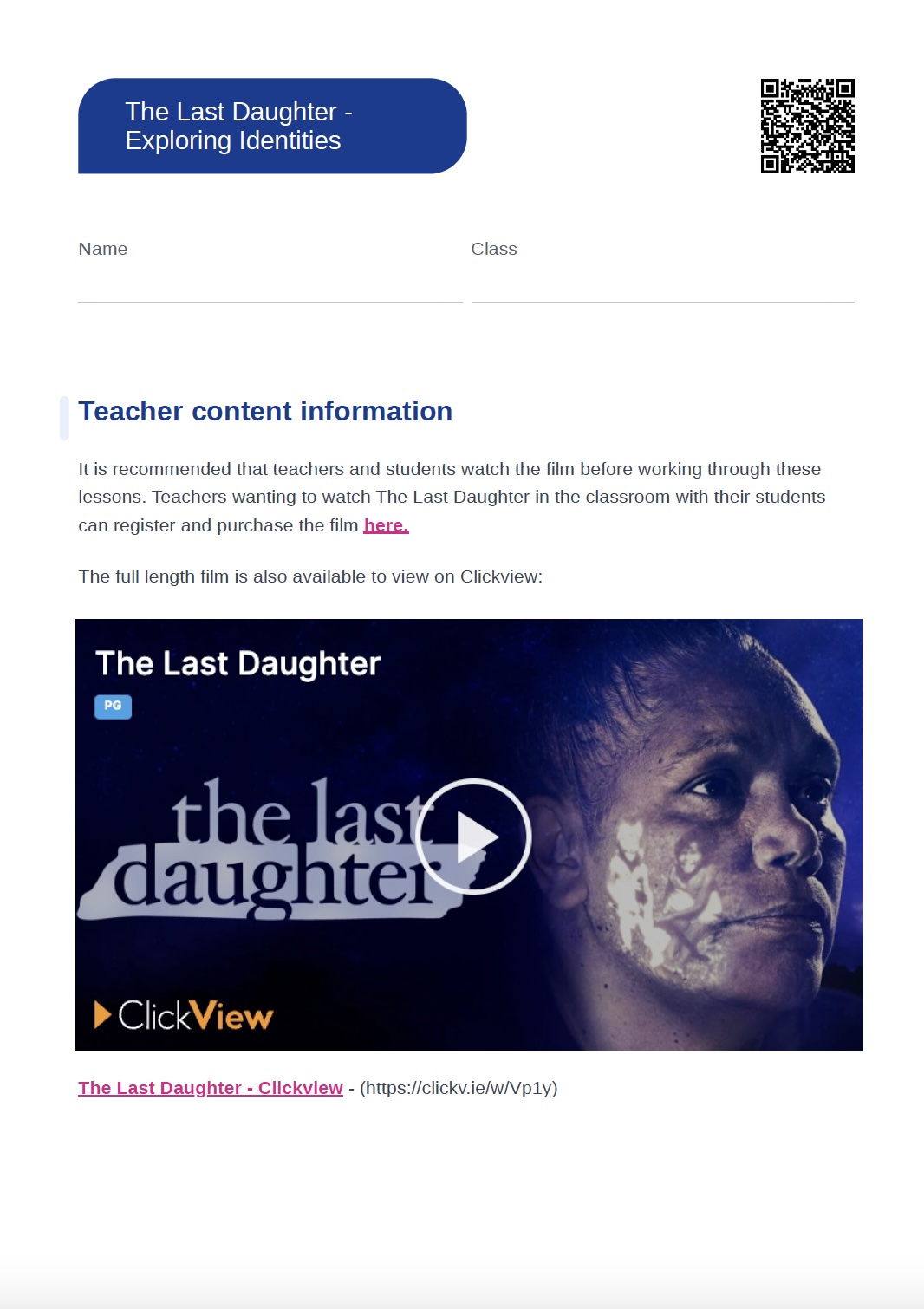Lesson summary
In this lesson, students unpack the five elements of identity and culture that make them who they are. They will look through a First Nations lens to uncover the importance of culture, exploring the story of Brenda Matthews in the feature-length documentary, The Last Daughter.
Teachers wanting to watch The Last Daughter in the classroom with their students can register and purchase the film here.
Learning intentions:
Students will...
- explore the concept of culture and identity
- gain a better understanding of Brenda Matthews’ culture and identity
- explore different ways to communicate their culture and identity.
Success criteria:
Students can...
- identify and explain what five main aspects of culture and identity are
- explain elements of Brenda Matthews’ identity and culture
- represent elements of their own culture and identity.
Lesson guides and printables
Curriculum links
Select your curriculum from the options below.
Lesson details
Curriculum mapping
Australian Curriculum (v9.0) content descriptions:
English:
Students learn to:
- analyse the representations of people and places in literary texts, drawn from historical, social and cultural contexts, by First Nations Australian, and wide-ranging Australian and world authors (AC9E9LE01)
- plan, create, edit and publish written and multimodal texts, organising, expanding and developing ideas through experimenting with text structures, language features, literary devices and multimodal features for specific purposes and audiences in ways that may be imaginative, reflective, informative, persuasive, analytical and/or critical (AC9E10LY06).
General capabilities: Literacy, Personal and Social Capability, Intercultural Understanding, Critical and Creative Thinking
Syllabus outcomes: EN5-8D, EN5-1A
Cross-curriculum priority: Aboriginal and Torres Strait Islander Histories and Cultures.
Relevant parts of Year 9 & 10 English achievement standards:
By the end of Year 10, students analyse and evaluate representations of people, places, events and concepts, and how interpretations of these may be influenced by readers and viewers. They create written and multimodal texts, including literary texts, for a range of purposes and audiences, expressing ideas and representations, making connections and providing substantiation.
Resources required
- Access to The Last Daughter
- Access to Canva or a similar online publishing tool
- Device capable of presenting audio and video to the class
- Student laptops or access to schools’ devices (laptops, iPads etc)
- Printed copies of the Culture and Identity Activity Worksheet – one copy per student
- Student worksheets - one copy per student
- Writing materials
Skills
This lesson is designed to build students’ competencies in the following skills:
- communication
- creativity
- cultural understanding
- empathy
- social skills
Additional info
Teachers wanting to watch The Last Daughter in the classroom with their students can register and purchase the film here.
The film is also available to view on Clickview.
Level of teacher scaffolding: Medium - facilitate class discussion.
Australians Together is a not-for-profit organisation that brings together non-Indigenous and First Nations staff, consultants and collaborators located across Australia. Their mission is to help non-Indigenous Australians listen and learn from First Nations people. Building a greater awareness of our shared history and its ongoing impact, gain a deeper respect for First Nations perspectives, and help pave the way for meaningful actions for an Australia together. You can learn more about Australians Together and their Learning Framework here.
Related professional learning
How to Teach Critical Thinking - Secondary
Quick summary: This course will help you to view the world with a more critical eye by introspectively exploring your own biases of thinking.




Welcome back!
Don't have an account yet?
Log in with:
Create your free Cool.org account.
Many of our resources are free, with an option to upgrade to Cool+ for premium content.
Already have an account?
Sign up with:
By signing up you accept Cool.org's Terms and Conditions(Opens in new tab) and Privacy Policy(Opens in new tab).